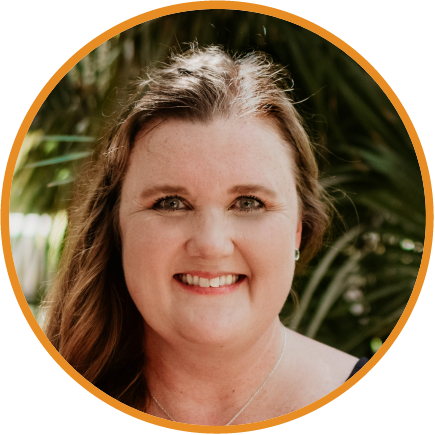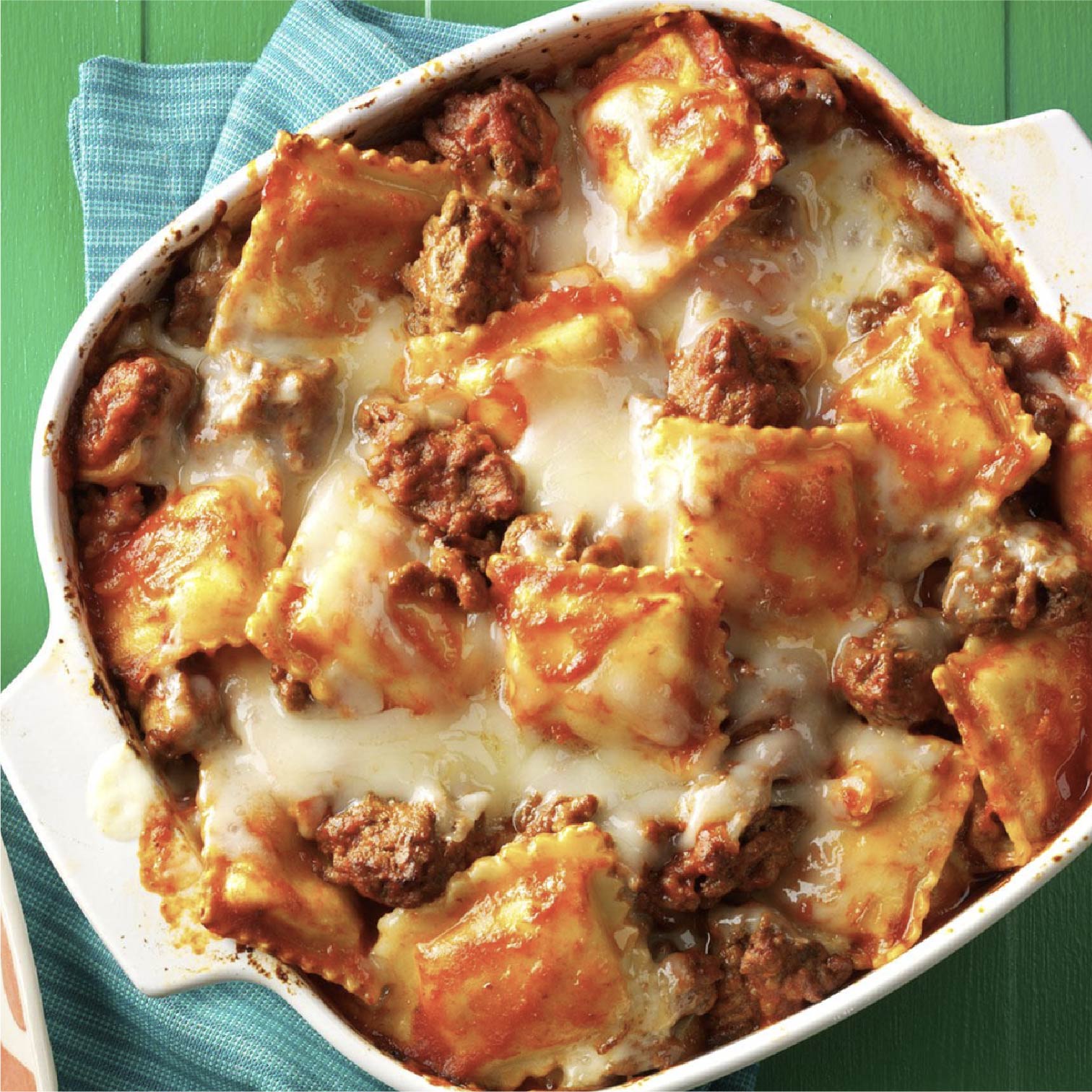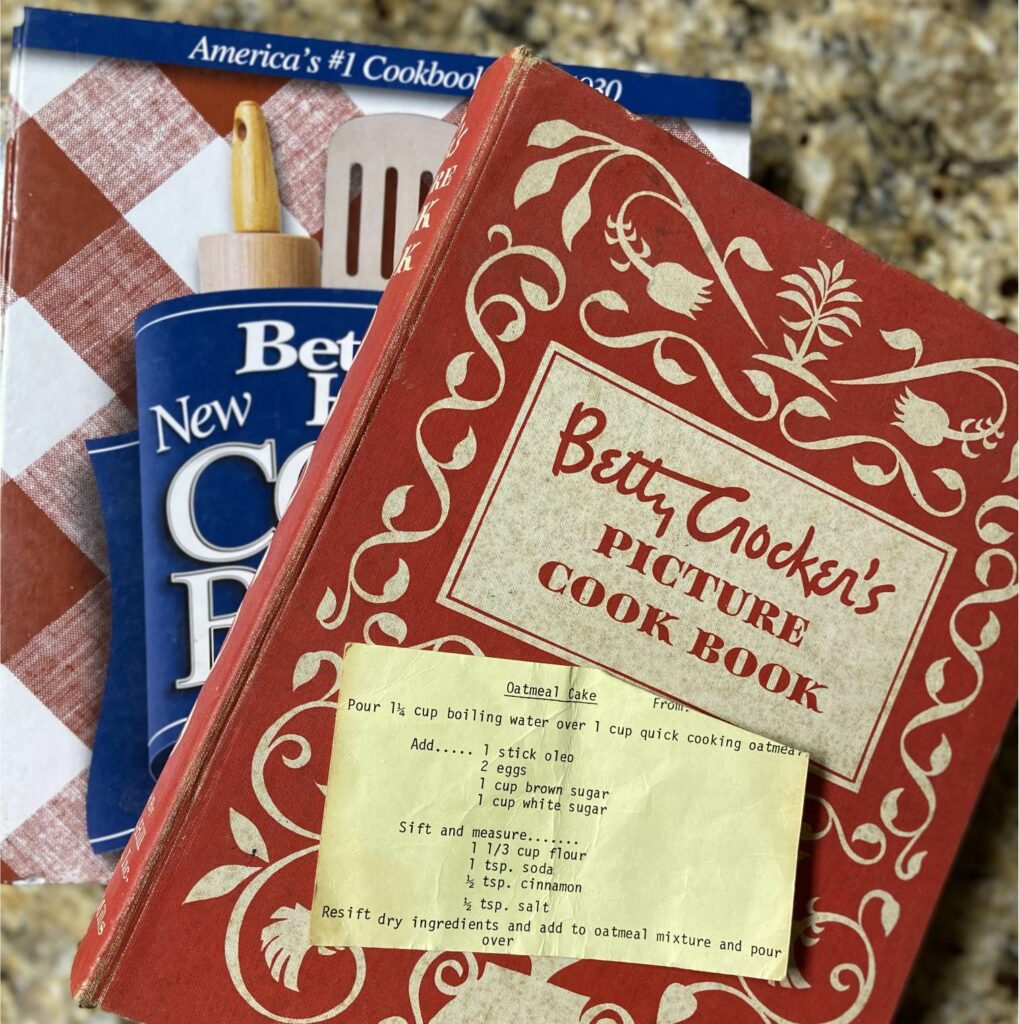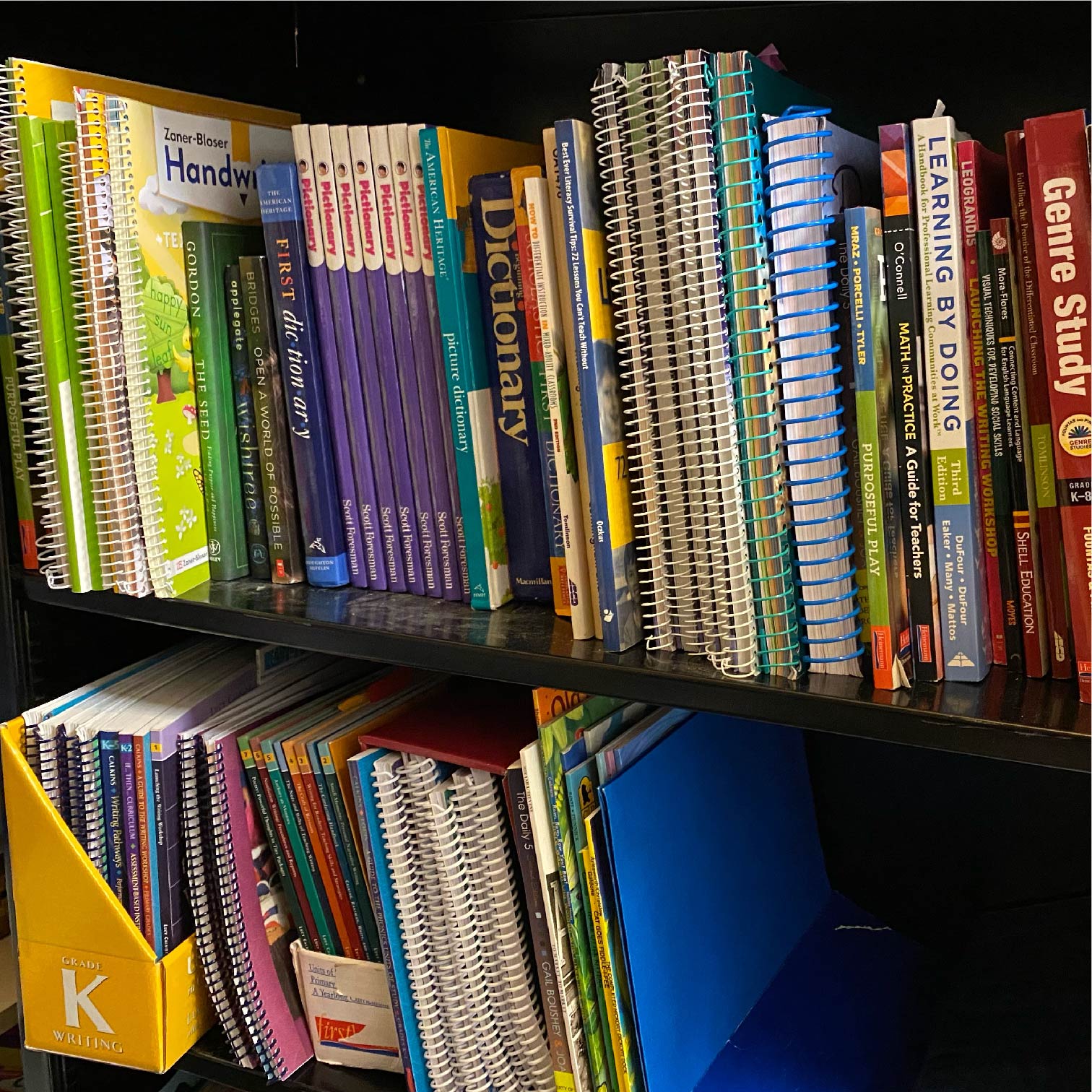“I like to think of myself as a literacy chef, gathering the right ingredients to work into my reading instruction… You know the SOR recipe, but what if you’re missing a particular ingredient?” ~ Stephanie Dowlearn

Stephanie Dowlearn
Educational Consultant and Kindergarten Teacher
It’s almost 6 o’clock on a Monday, and you’ve finally arrived home after enduring a faculty meeting that seemed to last an eternity. The commute home was a nightmare, and now you stare blankly into the pantry, searching for a few ingredients to throw together to prepare something edible for your family. You regret not getting up early to put  together that Potato Soup Crockpot Meal that you would have been ready to enjoy right about now. Instead, you stand frozen, listening to the queries of “what’s for dinner” echoing over your shoulder! You’ve made a million decisions throughout the day. Still, this one dinner decision is next to impossible, so you reluctantly grab your old favorites and decide on what has always worked in the past; a box of mac and cheese and some frozen chicken nuggets. It’s not the best, but it’s food and will get the job done! I recall a quote by Benjamin Franklin, “If you fail to plan, you are planning to fail!” Of course, I’m not saying that chicken nuggets and mac-n-cheese are a failure, but doesn’t a hot bubbly Ravioli Lasagna Casserole sound better? It may seem like a stretch, but just like this dinner scenario, finding the resources to serve up the Science of Reading can feel daunting, and you may feel like you don’t have the time for something new, but trust me, you do, and you may find that this recipe is something you can’t live without!
together that Potato Soup Crockpot Meal that you would have been ready to enjoy right about now. Instead, you stand frozen, listening to the queries of “what’s for dinner” echoing over your shoulder! You’ve made a million decisions throughout the day. Still, this one dinner decision is next to impossible, so you reluctantly grab your old favorites and decide on what has always worked in the past; a box of mac and cheese and some frozen chicken nuggets. It’s not the best, but it’s food and will get the job done! I recall a quote by Benjamin Franklin, “If you fail to plan, you are planning to fail!” Of course, I’m not saying that chicken nuggets and mac-n-cheese are a failure, but doesn’t a hot bubbly Ravioli Lasagna Casserole sound better? It may seem like a stretch, but just like this dinner scenario, finding the resources to serve up the Science of Reading can feel daunting, and you may feel like you don’t have the time for something new, but trust me, you do, and you may find that this recipe is something you can’t live without!
Know Your Recipe
By definition, a recipe is a set of instructions, including ingredients, for preparing a particular dish. I LOVE to cook, and I have collected quite a few cookbooks over the years; in each one, you can tell the recipes I’ve  used repeatedly. They are well loved with the remnants of a butter-covered thumb smeared across the print. I know my Mother-in-law’s Oatmeal Cake recipe almost by heart, but I’ll always pull out the recipe just to be sure I don’t forget something important. When we have a recipe to follow, our dish will turn out as intended, so knowing a good one that has been replicated and researched by many over decades is one to use. The Science of Reading teaches that phonemic awareness, phonics, vocabulary, fluency, and comprehension work together to create readers. Teachers throughout the country continue to undergo intense training in the Science of Reading, learning that following this recipe of explicit, systematic instruction will meet the literacy needs of their students. A decent stock of staple materials is necessary for a teacher and a cook, but no matter what ingredients you have at your disposal, following a tried and true recipe like the Science of Reading is still vital.
used repeatedly. They are well loved with the remnants of a butter-covered thumb smeared across the print. I know my Mother-in-law’s Oatmeal Cake recipe almost by heart, but I’ll always pull out the recipe just to be sure I don’t forget something important. When we have a recipe to follow, our dish will turn out as intended, so knowing a good one that has been replicated and researched by many over decades is one to use. The Science of Reading teaches that phonemic awareness, phonics, vocabulary, fluency, and comprehension work together to create readers. Teachers throughout the country continue to undergo intense training in the Science of Reading, learning that following this recipe of explicit, systematic instruction will meet the literacy needs of their students. A decent stock of staple materials is necessary for a teacher and a cook, but no matter what ingredients you have at your disposal, following a tried and true recipe like the Science of Reading is still vital.
Gather the Right Ingredients
I like to think of myself as a literacy chef, gathering the right ingredients to work into my reading instruction, ultimately creating a learning feast with a little of this and a little of that. You know the SOR recipe, but what if you’re missing a particular ingredient? Can you substitute it for something similar? Will the recipe be ruined, or will the substitution enhance and improve it? Walk into any elementary classroom, open the closet, and find  numerous resources that were once the flavor of the year. Millions of dollars are spent year after year trying to find suitable materials to teach reading, and most are collecting dust, still sitting in the plastic wrap like the day they were stored away. Since beginning my teaching career in 1998, I have seen numerous new programs, curriculums, and adoptions come and go as publishers tout that they have the answer for comprehensive reading instruction. I’ve used Open Court, Frog Street Press, Journeys, My View, Words Their Way, Lucy Calkins Units of Study, Fountas & Pinnell, Heggerty, Lexia, and many more. I’ve learned that sometimes the best recipes fail when there are too many cooks in the kitchen, so teachers must remember to keep the recipe for reading simple and use resources that make sense to create effective learning experiences for their students.
numerous resources that were once the flavor of the year. Millions of dollars are spent year after year trying to find suitable materials to teach reading, and most are collecting dust, still sitting in the plastic wrap like the day they were stored away. Since beginning my teaching career in 1998, I have seen numerous new programs, curriculums, and adoptions come and go as publishers tout that they have the answer for comprehensive reading instruction. I’ve used Open Court, Frog Street Press, Journeys, My View, Words Their Way, Lucy Calkins Units of Study, Fountas & Pinnell, Heggerty, Lexia, and many more. I’ve learned that sometimes the best recipes fail when there are too many cooks in the kitchen, so teachers must remember to keep the recipe for reading simple and use resources that make sense to create effective learning experiences for their students.
Mix It Up and Try New Things
Every recipe can be given new life with new flavors to appeal to a more refined palate. Teachers are tasked with helping students learn and are burdened with how to deliver instruction in a fun and engaging way. Especially now, as teachers deal with the effects of the pandemic, novelty is a must! During my last year in the classroom, I had the privilege of using a patented 3D Augmented Reality technology from Alive Studios Zoo called Classrooms alive with my kindergartners. This novel, brain- based concept of learning with animals added a much-needed spice to my reading lessons. The reactions from my students were that of pure joy! Happy squeals and excited giggles erupted as the zoo animals came to life on the screen! My kindergartners were mesmerized by the 3D Augmented Reality that brought the animals to life in our classroom. If you are unfamiliar with AR, it’s a tool that integrates the real learning world with a virtual world created by computer software. Studies have shown that using augmented reality technology in teaching and learning creates a more effective, efficient, and dynamic learning environment which leads to accelerated learning, and I can attest to that! I used the phonics curriculum my school had in place throughout the year, but it was a game changer when I acquired Classrooms alive! Using Classrooms alive to supplement my phonics instruction motivated my students, increased their engagement, and reinforced their learning. It was the perfect ingredient to add to my instructional routine!
based concept of learning with animals added a much-needed spice to my reading lessons. The reactions from my students were that of pure joy! Happy squeals and excited giggles erupted as the zoo animals came to life on the screen! My kindergartners were mesmerized by the 3D Augmented Reality that brought the animals to life in our classroom. If you are unfamiliar with AR, it’s a tool that integrates the real learning world with a virtual world created by computer software. Studies have shown that using augmented reality technology in teaching and learning creates a more effective, efficient, and dynamic learning environment which leads to accelerated learning, and I can attest to that! I used the phonics curriculum my school had in place throughout the year, but it was a game changer when I acquired Classrooms alive! Using Classrooms alive to supplement my phonics instruction motivated my students, increased their engagement, and reinforced their learning. It was the perfect ingredient to add to my instructional routine!
Make It Yours
In my well-loved cookbooks, there are notes in the margins where I’ve run out of one ingredient and grabbed another to sprinkle in its place. I make a note, and if it works, the ingredient changes and the recipe becomes more of my own. The Science of Reading is not a fad or a program to try. It is solid, proven research on how children learn to read. It is the foundational recipe that all teachers must know and implement. Most teachers do not have a say in the programs that are mandated, but be your own chef and use what you know to gather the right ingredients that will work for you to create successful readers. Continue to test your recipe as flavors change and the heat is turned up. And don’t forget to add your own taste and mix it up to create the best learning outcomes for your students.
If you’re interested in trying out Alive Studios Zoo 3D Augmented Reality Technology:
1. Visit the My Letters alive Journals web page.
2. Scroll all the way down to download the free Journals alive app and see the instructions.
3. Make Gerdy Giraffe and the letter Gg come to life on your device!
Finally, if all of this food talk has made you hungry, I’ve included 2 of my favorite back-to-school go-to meals and a sweet dessert to deal with the stress of settling into a new school year! Just click on the recipe links throughout this post.
Have a great 2022-23 school year!
